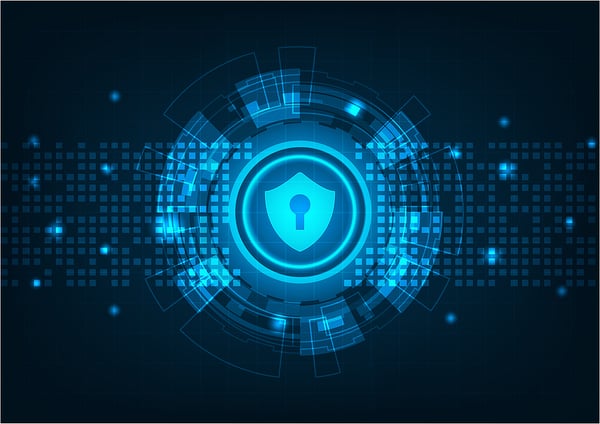Important News:SafeLogic Announces CryptoComply Go v4.0 with Comprehensive PQC Capabilities!! Read the announcement.
Post-Quantum Cryptography (PQC) Compliance Standards
Key Compliance Mandates Shaping the Future of Cryptography
Post-Quantum Cryptography is Now a Compliance Imperative
As quantum computing advances from theoretical to inevitable, compliance with post-quantum cryptography (PQC) standards is now a critical priority for regulated organizations.
Governments around the world are issuing directives, guidance, and timelines to sunset vulnerable algorithms and mandate migration to quantum-resistant cryptographic solutions.

United States – NSM-10, OMB M-23-02, Quantum Cybersecurity Preparedness Act

National Mandates and Timeline
The U.S. federal government leads global efforts through:
- NSM-10 – Requires all federal agencies to begin PQC migration and mitigate most quantum risk by 2035.
- OMB M-23-02 – Mandates annual inventories of quantum-vulnerable systems through 2035, prioritized by High-Value Assets.
- Quantum Cybersecurity Preparedness Act – Requires inventories and preparation of PQC migrations; OMB must issue guidance within one year of NIST final standards (released August 2024).
- Executive Order 14144 - President Trump’s revised EO (“Sustaining Select Efforts to Strengthen the Nation’s Cybersecurity”) maintains PQC urgency but streamlines the roadmap. It removes prescriptive agency mandates and delegates oversight to NSA and OMB. CISA and NSA must publish a list of quantum-safe product categories by December 1, 2025, with TLS 1.3 (or successor) adoption required by January 2, 2030.
NIST PQC Algorithm Standards (Finalized August 2024)
NIST officially released the first three PQC standards:
- FIPS 203 – ML-KEM (Key Encapsulation)
- FIPS 204 – ML-DSA (Digital Signatures)
- FIPS 205 – SLH-DSA (Hash-based Signatures)
CMVP implementation guidance (IG 10.3.A) now mandates:
- Self-tests and consistency checks
- ACVP test tool support
- Pair-wise consistency tests for validated FIPS 140-3 modules
This marks the start of the compliance clock across U.S. agencies.

Your Roadmap to Quantum-Safe Compliance
Learn how agencies, vendors, and integrators can meet new PQC mandates efficiently.
Get SafeLogic’s Essential Guide to PQC Migration to future-proof your encryption strategy.
IETF TLS Hybrid PQC Mode for FIPS 140-3

Why Hybrid Matters
Hybrid cryptographic approaches, combining traditional and PQC algorithms, offer transitional resilience. IETF’s Post-Quantum Use in Protocols (PQUIP) working group finalizes hybrid TLS and digital signature profiles.
FIPS 140-3 Support
Hybrid algorithms can now be validated under FIPS 140-3 as long as one component is NIST-approved (e.g., ML-DSA). This supports compatibility, downgrade resistance, and gradual integration.
NSA CNSA 2.0 – Cryptography for National Security Systems
CNSA 2.0, released in September 2022, establishes a post-quantum baseline for National Security Systems (NSS) and mandates a phased transition from RSA, ECDH, and other legacy public-key cryptography.
Transition Requirements
- January 1, 2027: All new NSS acquisitions must be CNSA 2.0 compliant
- December 31, 2025: Existing NSS must meet CNSA 1.0 or request a waiver
- 2033: Final mandatory compliance date for most system types
Supported Algorithms
- CRYSTALS-Kyber (ML-KEM)
- CRYSTALS-Dilithium (ML-DSA)
- LMS/XMSS (for signing)
- AES-256, SHA-384/512 (symmetric)

International PQC Initiatives, Standards & Guidelines
SafeLogic Accelerates Your Path to Post-Quantum Compliance:
Certified drop-in modules
FIPS 140-3 + PQC support
CNSA 2.0 hybrid mode
CryptoComply PQ TLS
Ongoing compliance guidance
Ready to Migrate? SafeLogic Makes PQC Compliance Easy.
Let's talk about your PQC migration roadmap. Call us at 844-436-2797 or complete the form below.
Advancing Hybrid Signatures Toward Standardization
November 10, 2025 • Alex Zaslavsky
CryptoComply Java v4.5 with PQC Algorithms Now Available
October 6, 2025 • Evgeny Gervis
What Happens on September 21, 2026?
September 30, 2025 • Evgeny Gervis
To Proxy or Not to Proxy
September 24, 2025 • Alex Zaslavsky
Implementing FIPS 140-3 Cryptography in WireGuard
September 24, 2025 • Warrie Proffitt








